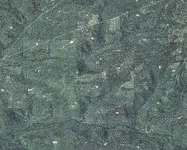As an experienced game hunter I can attest that if you are looking for biodiversity, you won't find it in the old growth forests. You won't find it in the clear cut either. If you want to see a lot of game to prey on, look in the edges between clear cut and old growth. That's the "sweet spot" for both predator and prey.
You're spot on about edge for game. If you're into edge habitat for hunting game, you should try Pennsylvania. The Game Commission manages a lot of State Game Lands across the state specifically for hunting (deer, turkey, bear, pheasant, etc.) and they manage a lot of acreage for edge habitat. They really don't need to though. Fracking has created more than enough. The aerial photo below is from, I believe, Elk County, although there are spots like this in Bradford, Tioga, and other counties as well.

Excessive edge is actually very bad for biodiversity though. There is very little of what one can call "intact" forest remaining in that photo, if any. The gas lines, road cuts, and well pads create openings for invasive, exotic plant species (multiflora rose, Japanese knotweed, honeysuckles, Japanese stilt grass, etc.). Invasive exotic plants out-compete native plants and they don't provide the same benefits as our native plants because native insects, including pollinators, aren't adapted to them as a food or nectar source. Doug Tallamy compared a white oak and Bradford pear (an invasive exotic tree that is widely used in horticulture). He scoured leaves on branches up to head height, counting caterpillars. He counted hundreds of caterpillars of 19 different species of moths and butterflies on the white oak. He found
only one caterpillar on the Bradford pear. The research was repeated and showed that oaks, maples, cherry, and other native trees harbor hundreds of native species of moths and butterflies and Bradford pear, very, very few. Why is this important? Because for many species of birds, it takes thousands of caterpillars to raise their young. The recent State of the Birds report found that there are approximately 2.9 billion fewer birds in the US when compared to 1970 populations, an overall decrease of 29%. When we lose our native plant species, we also lose our native animals.
Many species are known as "forest interior dependent species." That is, they rely on large, unbroken blocks of contiguous forest for breeding and suitable habitat. This includes many species of migratory Neotropical songbirds (e.g. scarlet tanagers, very many warblers, others) as well as bobcats, wood thrush, and other animals. When the forest is opened up like that, areas can actually become population sinks for songbird species because their nests can become parasitized by starlings and brown-headed cowbirds, which kick eggs out of nests, then they lay their eggs in the nests of other birds and have those parents tend to the eggs and young. So keeping forests intact is much better from a biodiversity and conservation perspective.
Kindest regards,
Kantuck






